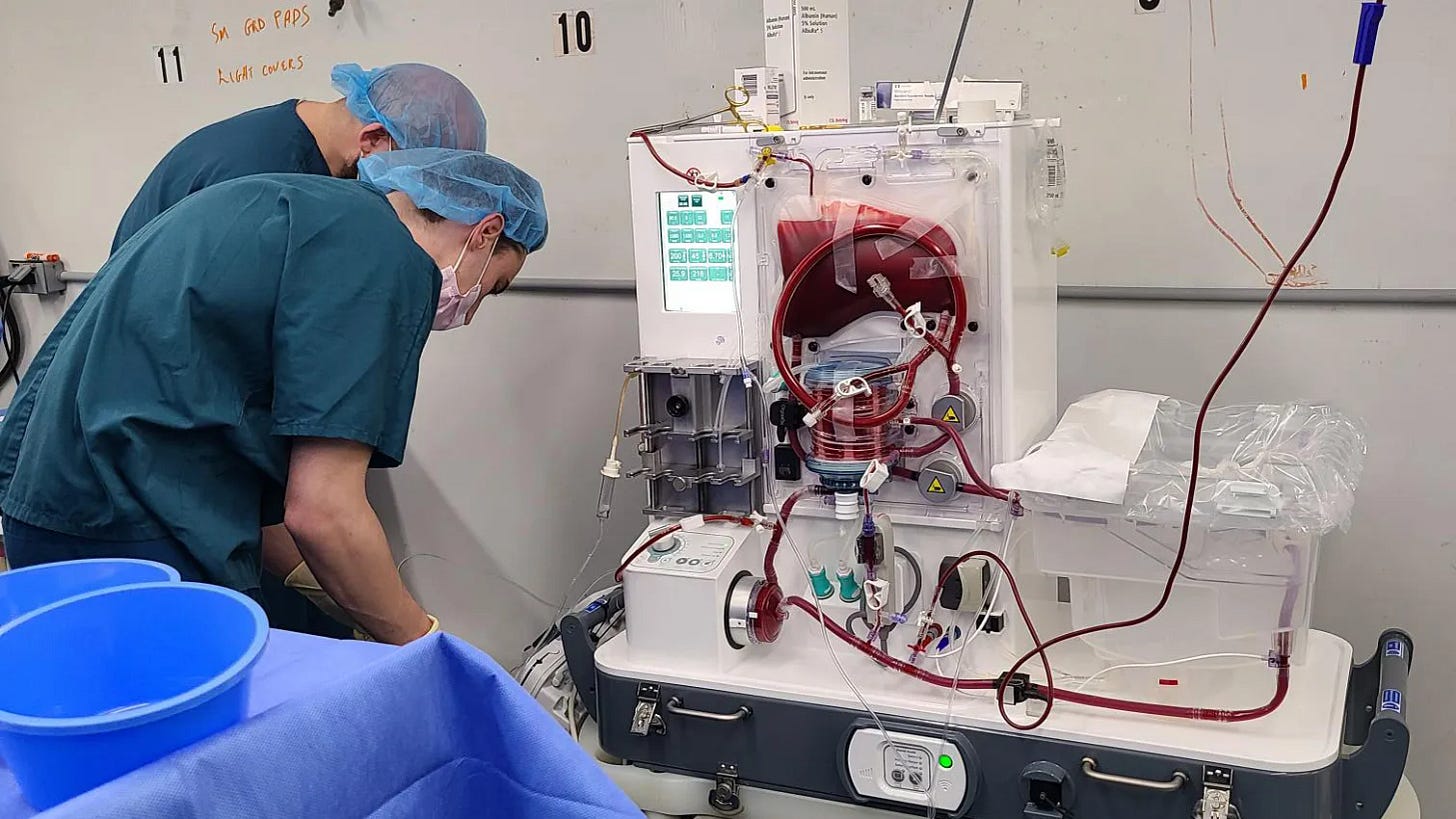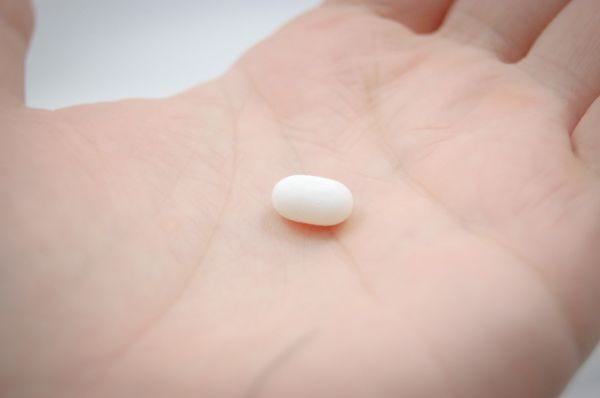Sci-Ed Update 310
Brain-fat feedback, voids in evidence-based information, disliking vegetables, academic integrity, third-hand smoke, pig liver breakthrough, dropping sperm count, new COVID pill, restoring aged muscle
Unlocking the Fountain of Youth: Brain-Fat Tissue Feedback Loop Holds Key
A new study reveals a vital brain-fat tissue feedback loop that plays a pivotal role in aging. The research identifies specific neurons in the hypothalamus that, when activated, signal the body’s fat tissue to release energy, facilitating physical activity and brain function. As this feedback loop deteriorates with age, health problems associated with aging become more prevalent.
Mice with a constantly active feedback loop displayed delayed aging, increased physical activity, and longer lifespans. This groundbreaking research offers potential insights for future interventions in aging and longevity.
Key Facts:
The study unveils a critical brain-fat tissue feedback loop that influences aging and health.
Activation of specific neurons in the hypothalamus triggers the release of fatty acids and enzymes that fuel the body and brain.
Mice with a sustained feedback loop lived longer, were more physically active, and displayed signs of delayed aging.
Read more→ AandP.info/t7e
How online misinformation exploits ‘information voids’ — and what to do about it

A study in Nature1 last month highlights a previously underappreciated aspect of this phenomenon: the existence of data voids, information spaces that lack evidence, into which people searching to check the accuracy of controversial topics can easily fall. The paper suggests that media-literacy campaigns that emphasize ‘just searching’ for information online need to become smarter. It might no longer be enough for search providers to combat misinformation and disinformation by just using automated systems to deprioritize these sources. Indeed, genuine, lasting solutions to a problem that could be existential for democracies needs to be a partnership between search-engine providers and sources of evidence-based knowledge.
The mechanics of how misinformation and disinformation spread has long been an active area of research. According to the ‘illusory truth effect’, people perceive something to be true the more they are exposed to it, regardless of its veracity. This phenomenon pre-dates2,3 the digital age and now manifests itself through search engines and social media.
Read more→ AandP.info/nse
A brain-dead man was attached to a gene-edited pig liver for three days
Surgeon Abraham Shaked thinks he has probably carried out more than 2,500 liver transplants. But in December 2023, a team he oversees at the University of Pennsylvania did something he’d never tried before.
Working on the body of a brain-dead man, they attached his veins to a refrigerator-size machine with pig liver mounted in the middle of it.
For three days, the man’s blood passed into the machine, through the pig liver, and back into his body.
This “extracorporeal,” or outside-the-body, liver—whose initial test was announced today by the University of Pennsylvania and a biotech company, eGenesis—is designed to help people survive acute liver failure, which can be caused by infection, poisoning, or (most commonly) too much alcohol.
Read more→ AandP.info/lue
Anatomy of Trust: Promoting Integrity in A&P Education
Episode 146 of The A&P Professor podcast is one of our winter shorts, where I replay interesting segments from previous episodes. In this one, we discuss the importance of academic integrity in the Anatomy & Physiology course. We emphasize the need to incorporate discussions about integrity in the syllabus and course materials and share real-life examples of violations in the healthcare field. We highlight how dishonesty can have serious consequences and discuss strategies for prevention, such as using multiple test versions and unique topics for papers/projects. Providing examples of acceptable practices and discouraging unethical behavior foster a culture of integrity. We invite listeners to contribute their own strategies for promoting academic integrity.
00:00 | Introduction
01:07 | Academic Integrity in Anatomy & Physiology
29:39 | Modeling Professional Integrity
38:34 | Staying Connected
To listen to this episode, click on the play button above ⏵ (if present) or this link→ theAPprofessor.org/podcast-episode-146.html
Sperm counts are down worldwide and researchers are discovering why
THE year was 1974...
Comparing contemporary semen samples with historical data, two doctors in Iowa named C. M. Kinloch Nelson and Raymond Bunge showed that there had been a drastic shift in men’s sperm counts over the previous two decades. In 1951, each millilitre of semen contained 107 million sperm; by the 1970s, that figure had dropped by more than 50 per cent – to just 48 million. The average volume of semen from a single ejaculation had fallen too.
By the 1990s, the issue started catching considerably more scientific attention, although some researchers were still sceptical. They blamed differences in techniques, or the fact that studies were mostly on men already having treatment for infertility. Such doubts are now shrinking. “There is a huge body of scientific evidence showing this decline,” says Albert Salas-Huetos at the University of Rovira i Virgili in Spain.
For researchers like Salas-Huetos, the big question is no longer whether this so-called “spermageddon” is really happening, but why and what to do about it. Studies are beginning to shed light on environmental toxins that may be to blame, as well as other lifestyle factors contributing to the problem. With a better idea of the prime suspects, we may finally be able to put the brakes on this trend, or even reverse it.
Read more→ AandP.info/z4j
Why do so many kids dislike vegetables? A new study found out
Humans are inherently social creatures, often learning and drawing conclusions from observing others. This is particularly true in the realm of eating habits and food preferences.
A concept known as social modeling plays a crucial role in shaping our dietary choices, where we often look to others as benchmarks for what and how much to eat. But how deep does this influence go?
A recent UK study delved into this question, examining the impact of observing facial expressions on food preferences, specifically regarding raw broccoli.
Dr. Katie Edwards from Aston University School of Psychology, the study’s lead author, emphasized the findings in the journal Frontiers in Psychology.
“We show that watching others eating a raw vegetable with a negative facial expression reduces adult women’s liking of that vegetable, but not their desire to eat it,” Edwards explained.
Read more→ AandP.info/bub
Potent new pill provides COVID relief for the masses
There’s new hope for the average person seeking relief from COVID-19: a drug called simnotrelvir has been shown to speed recovery from mild to moderate disease by about 1.5 days1.
A clinical trial found that simnotrelvir, which is administered as a series of pills, kicks in almost immediately after being taken, reliving symptoms such as fever, cough and runny nose.
Simnotrelvir “is clearly a potent drug. It’s clearly got a positive result. And that’s welcome,” says infectious-disease pharmacologist Saye Khoo at the University of Liverpool in the United Kingdom.
The results were published today in the New England Journal of Medicine.
Read more→ AandP.info/dvw
Blocking an aging-related enzyme may restore muscle strength
As people age, their muscles tend to dwindle and weaken, especially with lack of use. With continued muscle loss, daily tasks are harder to perform and the risk of falling increases. One research team is teasing apart what’s behind this muscle loss by focusing on an enzyme associated with aging, which they’ve named a “gerozyme.”
The enzyme is 15-hydroxyprostaglandin dehydrogenase, or 15-PGDH. It breaks down a signaling compound called prostaglandin E2. That compound activates the proliferation of muscle stem cells, regenerating damaged muscles.
Stem cell biologist Helen Blau of Stanford University School of Medicine and colleagues previously found that blocking 15-PGDH in old mice restored their withered muscles and improved their strength after a month of treatment. On the flip side, young mice lost muscle and became weaker after their levels of this enzyme were increased for a month.
Read more→ AandP.info/jlt
Smoking Residue on Household Surfaces Can Harm Kids
Nearly half of homes tested in a new study contained toxic byproducts of cigarette smoke.
Known as thirdhand smoke, these tobacco byproducts remained on furniture, floors and bric-a-brac.
Researchers who tested homes of 84 children found nicotine on surfaces in every home, and nearly half had detectable levels of a tobacco-specific carcinogen called NNK.
"This is critically important and concerning," said lead author Ashley Merianos, an associate professor at the University of Cincinnati and affiliate member of the Thirdhand Smoke Research Consortium.
The study found that NNK levels on surfaces and in vacuumed dust were similar. Merianos said that indicates that both can be similar sources of thirdhand smoke exposure for kids.
"This research highlights that home smoking bans do not fully protect children and their families from the dangers of tobacco," she added in a university news release.
Read more→ AandP.info/ffp










